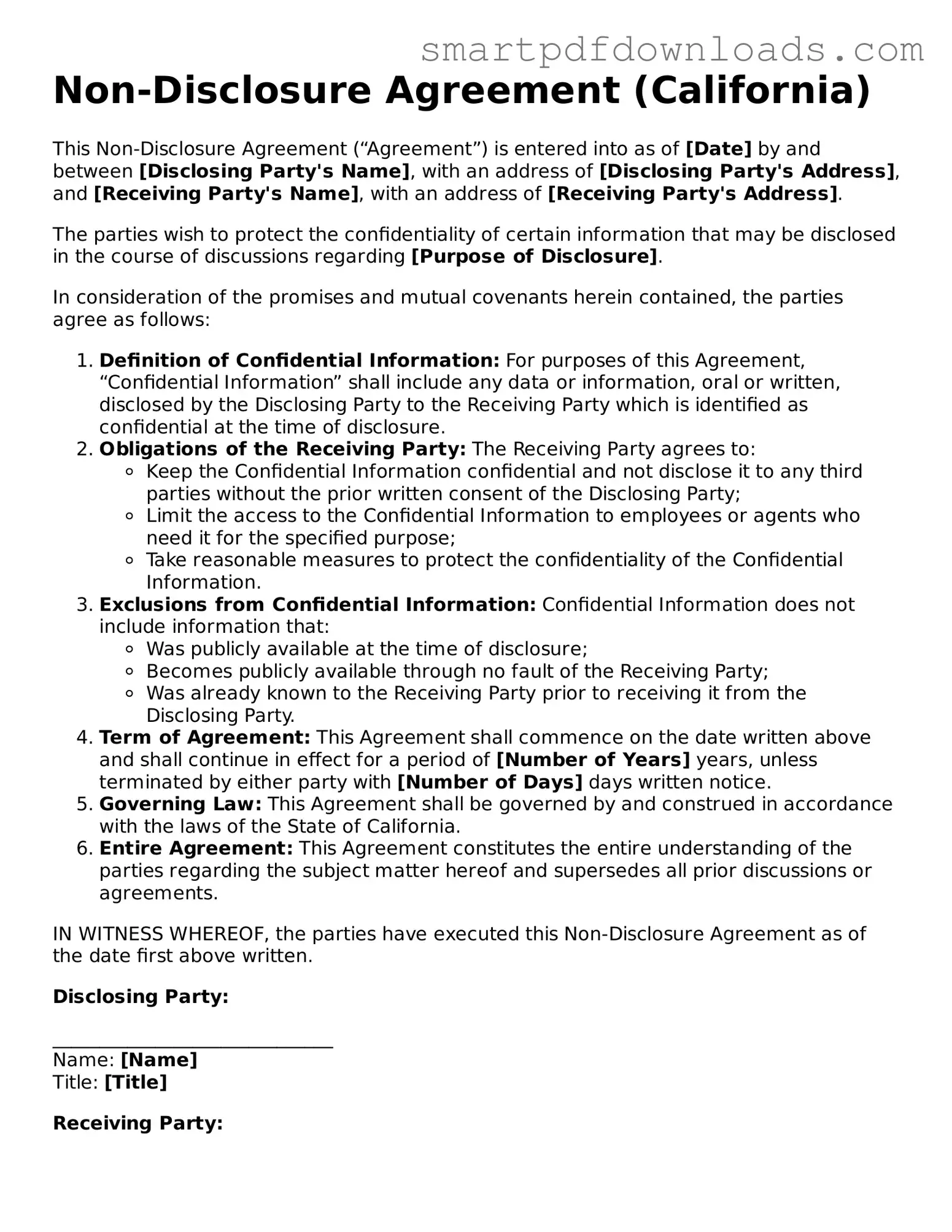Non-Disclosure Agreement (California)
This Non-Disclosure Agreement (“Agreement”) is entered into as of [Date] by and between [Disclosing Party's Name], with an address of [Disclosing Party's Address], and [Receiving Party's Name], with an address of [Receiving Party's Address].
The parties wish to protect the confidentiality of certain information that may be disclosed in the course of discussions regarding [Purpose of Disclosure].
In consideration of the promises and mutual covenants herein contained, the parties agree as follows:
- Definition of Confidential Information: For purposes of this Agreement, “Confidential Information” shall include any data or information, oral or written, disclosed by the Disclosing Party to the Receiving Party which is identified as confidential at the time of disclosure.
- Obligations of the Receiving Party: The Receiving Party agrees to:
- Keep the Confidential Information confidential and not disclose it to any third parties without the prior written consent of the Disclosing Party;
- Limit the access to the Confidential Information to employees or agents who need it for the specified purpose;
- Take reasonable measures to protect the confidentiality of the Confidential Information.
- Exclusions from Confidential Information: Confidential Information does not include information that:
- Was publicly available at the time of disclosure;
- Becomes publicly available through no fault of the Receiving Party;
- Was already known to the Receiving Party prior to receiving it from the Disclosing Party.
- Term of Agreement: This Agreement shall commence on the date written above and shall continue in effect for a period of [Number of Years] years, unless terminated by either party with [Number of Days] days written notice.
- Governing Law: This Agreement shall be governed by and construed in accordance with the laws of the State of California.
- Entire Agreement: This Agreement constitutes the entire understanding of the parties regarding the subject matter hereof and supersedes all prior discussions or agreements.
IN WITNESS WHEREOF, the parties have executed this Non-Disclosure Agreement as of the date first above written.
Disclosing Party:
______________________________
Name: [Name]
Title: [Title]
Receiving Party:
______________________________
Name: [Name]
Title: [Title]
